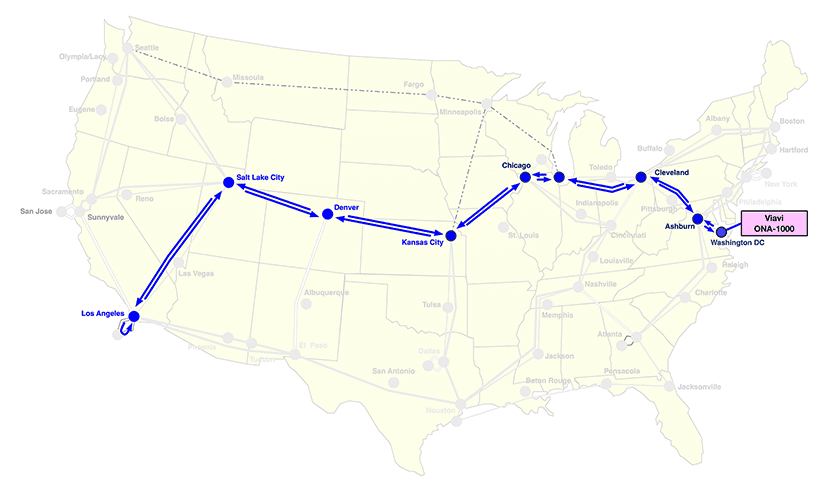Estimated reading time: 3 minutes
By Jon-Paul Herron, Director, Internet2 Network Operations Center (NOC)
The last few weeks of the Next Generation Infrastructure (NGI) project have focused on testing. We want to be sure that the network design, deployment, connection, and configuration performs as expected before we put the community’s research, education and cloud application traffic on it.
A subset of the tests measure system performance to sample failover functionality, reconvergence times, and QoS performance. Here is a small sample of the tests the system has passed in the last two weeks, between April 19-30, 2021:
| Test Type |
Test Acceptance Criteria |
Test Results |
Distributed node outage |
- Routes converge as quickly as current network
- Alarms show as expected
- Traffic fails over to expected path as quickly as current network
- Node recovers
- Traffic fails back as expected
|
Partial retest needed |
| Interconnect node outage |
- Routes converge as quickly as current network
- Alarms show as expected
- Traffic fails over to expected path as quickly as current network
- Node recovers
- Traffic fails back as expected
|
Passed |
| Backbone outage |
- Routes converge as quickly as current network
- Alarms show as expected
- Traffic fails over to expected path as quickly as current network
- Node recovers
- Traffic fails back as expected
|
Passed |
| Transit provider failover |
- Routes converge as quickly as current network
- Alarms show as expected
- Traffic fails over to expected path as quickly as current network
- Node recovers
- Traffic fails back as expected
|
Passed |
In addition to functionality, we have started testing the platform for throughput and loss with traffic generators; we’re excited to report that we’ve successfully passed traffic bidirectionally, coast-to-coast! Using a Viavi ONA-1000 400G network tester, we were able to run a series of BERT and RFC 2544 traffic tests showing the raw throughput of a single coast-to-coast path on the new network.
 Traffic path for 400 Gbps traffic test.
Traffic path for 400 Gbps traffic test.
 Throughput testing results, showing successful 396 Gbps test.
Throughput testing results, showing successful 396 Gbps test.
What kind of result did we see on the new 400G links? We were able to successfully carry more than 395 Gbps bidirectionally across the country, from McLean, Virginia, to Los Angeles, California, and back, with zero packet loss! This is important coming just a few days after Internet2 hit an all-time record of 10 petabytes of data moved in a single day and is seeing significant growth this academic year.
We’re confident that the upgraded Internet2 network will support scale-up to multiple 400G backbone links needed for the explosive growth in research and education traffic coming from US institutions in the coming years.